#custommachining
Explore tagged Tumblr posts
Text
Precision Sheet Metal Manufacturing: Future Directions in the Industry
As the global market grows and evolves, the demand for product customization has intensified. Many leading companies are concentrating on their core areas—brand management, product design, and marketing—while outsourcing non-core functions to specialized manufacturing service providers. This strategy has fostered the emergence of manufacturing service companies, such as Foxconn and Flextronics, which are now prominent players in the global manufacturing landscape.
Precision metal components have become indispensable in these outsourced products, playing a crucial role in both the aesthetics and functionality of end products. With rising precision requirements, manufacturing service providers are increasingly specializing in precision manufacturing, leveraging their technological and cost advantages. Even industry giants like Foxconn and Flextronics rely on these specialized firms for manufacturing and technical support, thereby enhancing their overall competitiveness and shaping China's precision metal manufacturing sector.
One key area of focus within this industry is precision sheet metal manufacturing, which is essential for delivering high-quality, accurate metal components. This process utilizes CNC and sheet metal technologies, employing various cold-working techniques such as cutting, stamping, bending, welding, riveting, assembling, and forming to process thin metal sheets (typically less than 6mm thick) to meet stringent customer requirements for product accuracy and functionality.
Compared to traditional sheet metal manufacturing, precision sheet metal fabrication offers several distinct advantages:
High Precision Requirements for Downstream Industries Precision sheet metal services cater to high-tech sectors such as telecommunications, aerospace, solar energy, and semiconductors, where precision is critical. For instance, the accuracy of communication base station antennas directly affects signal transmission and reception, while solar power systems require precise metal components to ensure optimal light concentration and photoelectric conversion efficiency. For example, a 300-watt solar panel demands a backplate thickness tolerance within 0.5% and no deformation under 4000-volt high-pressure tests. Additionally, these industries impose stringent requirements on the visual quality of products, including color consistency and smoothness of lines.
Need for High-Precision Equipment and Molds Precision manufacturing demands advanced equipment, such as flexible manufacturing systems, CNC punching machines, CNC bending machines, friction welding equipment, and robots for assembly and welding. The automation and precision of these devices ensure the accuracy of sheet metal products. For example, CNC punching machines can maintain a forming error of ±1.5mm for plates measuring 1.1m x 1.4m. Mold accuracy is also crucial, typically requiring precision within microns (0.01mm).
Focus on Accurate Unfolding Processes Precision sheet metal manufacturing utilizes cutting-edge tools like laser cutters and CNC bending machines, revolutionizing traditional processing methods. Traditionally, sheets were roughly unfolded before bending, then resized and further processed, leading to inefficiencies and material waste. In contrast, precision sheet metal fabrication involves precise unfolding, cutting all shapes, holes, and slots before bending, which enhances efficiency and quality but demands higher precision in unfolding diagrams.
High-Quality Production Environment A high-quality production environment is essential for ensuring the reliability and stability of precision sheet metal products. Precision equipment is sensitive to temperature changes, which can affect device accuracy and, consequently, product quality. Furthermore, downstream industries like telecommunications and solar energy require strict controls on carbon emissions, airborne dust levels, and equipment insulation to ensure stable operation of the final products.
As a professional in the field, I believe that the evolution of precision sheet metal manufacturing reflects broader trends in the industry. The increasing demand for high precision, coupled with advancements in technology, is driving the sector towards greater specialization and innovation. This focus on precision not only enhances product quality but also strengthens the competitive edge of manufacturing service providers globally.
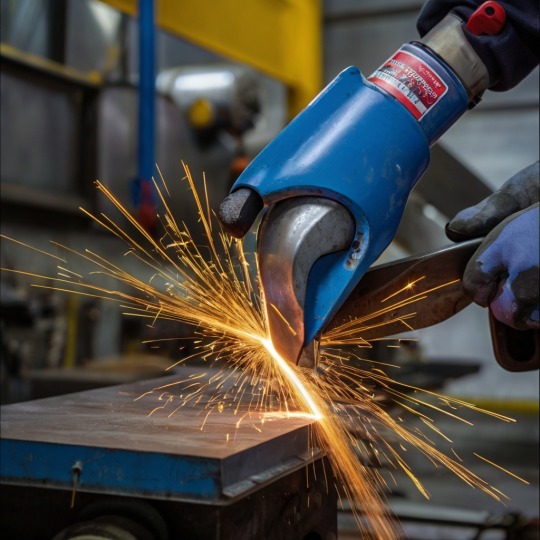
#CNCmachining#CNCmanufacturing#PrecisionMachining#CNCtechnology#MachineShop#CustomMachining#CNCparts#MetalFabrication#CNCengineering
1 note
·
View note
Photo


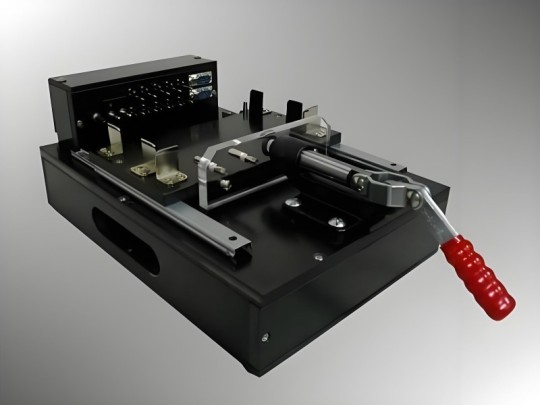
(通过 利用数控加工和精密夹具提高自动化生产线效率-亿鑫精密五金塑胶有限公司_金属_塑料)
#CNCmachining#AutomatedProductionLines#PrecisionFixtures#HydraulicManifolds#WireCutFixture#JigAndFixture#ManufacturingSolutions#IndustrialAutomation#YixinPrecision#SmartManufacturing#custommachining
0 notes
Text
7075 Aluminum vs. 12L14 Carbon Steel: A Comparative Analysis for Manufacturers
Introduction
When it comes to manufacturing precision components, selecting the right material is crucial. 12L14 carbon steel is one of the most machinable steels available, making it a preferred choice for industries requiring high-speed production. Governed by ASTM A582, this free-machining steel offers exceptional benefits compared to alternatives like 1045 carbon steel and 7075 aluminum. In this article, we’ll explore the properties, applications, and advantages of 12L14 carbon steel and why manufacturers in the USA choose it for their machining needs.
What is 12L14 Carbon Steel?
12L14 is a low-carbon steel enhanced with lead (Pb), sulfur (S), and phosphorus (P) to improve machinability. It falls under the category of resulfurized and rephosphorized carbon steels, designed explicitly for precision machining. The addition of lead significantly reduces tool wear and enhances cutting efficiency, making it ideal for mass production.
Key Properties:
Excellent Machinability – Rated at nearly 170% compared to 1112 steel.
High Dimensional Accuracy – Ideal for intricate components.
Good Surface Finish – Reduces secondary finishing operations.
Lower Strength & Hardness – Not suitable for high-stress applications.
Not Recommended for Welding – Due to lead content, welding can produce toxic fumes.
ASTM A582 and 12L14 Compliance
ASTM A582 is a specification covering free-machining stainless steel bars for machining applications. Although 12L14 carbon steel is not stainless, it adheres to similar quality standards, ensuring high precision and consistency in production.
Benefits of ASTM A582 Compliance:
Consistency in Material Properties
Improved Quality Control for Manufacturers
Reliable Performance in Automated Machining
12L14 Carbon Steel vs. 1045 Carbon Steel vs. 7075 Aluminum
To determine the best material for your manufacturing needs, let’s compare 12L14 carbon steel, 1045 carbon steel, and 7075 aluminum across different parameters.
Choosing the Right Material:
If high machinability and mass production are priorities → 12L14 Carbon Steel
If higher strength and toughness are required 1045 Carbon Steel
If lightweight and corrosion resistance matter → 7075 Aluminum
Applications of 12L14 Carbon Steel
12L14 is widely used in industries requiring high-precision components. Common applications include:
Automotive parts – Bushings, spacers, and shafts.
Fasteners – Screws, bolts, and connectors.
Hydraulic components – Fittings and valve stems.
Electrical components – Terminals and switches.
Q&A Section
Q1: Why is 12L14 carbon steel preferred for machining? A: Due to its high sulfur and lead content, 12L14 offers exceptional machinability, reducing tool wear and increasing production efficiency.
Q2: Is 12L14 carbon steel corrosion-resistant? A: No, 12L14 has poor corrosion resistance and requires protective coatings or plating for outdoor applications.
Q3: Can 12L14 be welded? A: Welding is not recommended due to lead content, which can release toxic fumes.
Conclusion
For manufacturers requiring high-speed machining with superior accuracy, 12L14 carbon steel remains an excellent choice. Its compliance with ASTM A582 standards ensures consistency and reliability. While it may not be ideal for high-stress applications or environments requiring corrosion resistance, its superior machinability makes it the go-to material for precision components.

#12L14CarbonSteel#ASTMA582#PrecisionMachining#ManufacturingMaterials#CarbonSteel#SteelIndustry#MachiningExperts#HighSpeedMachining#IndustrialMaterials#CNCManufacturing#MetalFabrication#SteelComparison#MaterialScience#SteelGrades#EngineeringMaterials#CustomMachining#AlexandriaPrecision#ManufacturingUSA#SteelApplications#AutomotiveIndustry
0 notes
Text
🌟 Unlock the Potential of Custom-Machined Polypropylene! 🌟
🔧 Polypropylene is a versatile thermoplastic known for its excellent chemical resistance, low density, and durability. Our latest blog post explores how this material can be precisely machined to meet your industrial needs. Discover how our custom processing services can support your large-scale plastic procurement and OEM projects.
👉 Read more here:
#polypropylene#custommachining#industrialapplications#engineering#manufacturing#oem#plastic products#innovation#sustainability#materialscience#industrial design#technology#futuretech#ecoideas
0 notes
Text
Why Shim Washers are Crucial for Optimal Fit in Mechanical Assemblies | Precision Engineering
This article helps in understanding Shim washers as they are thin, flat pieces used to fill gaps or spaces between components in mechanical assemblies. They help create a snug fit, align parts properly, and absorb vibrations. Often made from materials such as stainless steel, plastic, or brass, these washers come in various shapes and sizes, tailored to meet specific engineering requirements.
If you're working in fields such as aerospace, automotive, or industrial machinery, you'll quickly realize that a proper fit is paramount to maintaining efficiency and functionality. By utilizing shim washers, you can achieve that crucial alignment, allowing for smoother operation and extending the life of your assemblies.

Different types of shim washers cater to specific needs and applications. Here are some common types and their uses:
1. Flat Shim Washers
These are the most common type and are used to fill gaps between two surfaces. Flat shim washers can be made from various materials, including stainless steel and plastic, making them versatile for many applications.
2. Conical Washers
Conical washers are designed to distribute loads evenly and can be used in situations where alignment is critical. They are often found in automotive and aerospace applications.
3. Tab Washers
Tab washers have a protruding tab that locks into place, preventing rotation. They are typically used in applications where parts need to remain stationary.
4. Countersunk Washers
These washers have a conical shape that allows them to fit flush with the surface. They’re commonly used in applications where a smooth finish is required.
5. Fender Washers
Fender washers have a larger diameter than standard washers, providing more surface area to distribute loads. They’re particularly useful in applications where the mounting surface may be uneven.
6. Sealing Washers
Sealing washers are designed to create a watertight seal, making them ideal for plumbing and automotive applications.
When selecting shim washers, consider the specific requirements of your assembly, including load distribution, alignment needs, and environmental conditions.
Selecting the appropriate shim washer is crucial for achieving optimal fit and performance. Here are some factors to consider:
Material: Choose a material that suits your application’s environmental conditions. For instance, stainless steel is excellent for corrosion resistance, while plastic may be more suitable for non-conductive applications.
Thickness: Determine the necessary thickness to fill gaps adequately. You may need to consult engineering specifications to ensure the correct fit.
Diameter: The washer’s outer diameter should fit the application requirements, ensuring it covers the needed area without interfering with other components.
Shape: Depending on your assembly needs, choose the appropriate shape (flat, conical, fender, etc.) for optimal performance.
Manufacturer Quality: Always select shim washers from reputable shim washer manufacturers to ensure quality and reliability. Quality components lead to better overall assembly performance.
If you're unsure which shim washers best suit your needs, consulting with a knowledgeable supplier can provide valuable insights tailored to your specific application.
In the world of mechanical assemblies, achieving an optimal fit is paramount. Shim washers are crucial components that help you maintain precision and reliability in your projects. By understanding the various types of shim washers available and their benefits, you can make informed choices that enhance your assemblies' performance and durability.
Whether you're working with foundation j bolts, j type foundation bolts, stud bolts, or Wedge Lock Washers, using the right shim washers will ensure your mechanical assemblies operate smoothly and efficiently.
This guide will equip you with the knowledge to take your garment construction skills to the next level and create clothes that look and feel truly professional.
Link
Why Shim Washers are Crucial for Optimal Fit in Mechanical Assemblies | Precision Engineering
#ShimWashers#MechanicalAssemblies#PrecisionEngineering#OptimalFit#EngineeringSolutions#MechanicalDesign#IndustrialComponents#MachineEfficiency#EngineeringInnovation#CustomMachining
0 notes
Video
youtube
3 Axis CNC Machining - 45# steel parts prototype processing #cncmachining
KD Hardware offers high-precision 3 Axis CNC Machining services, focusing on meeting customer customization needs. Our advanced equipment ensures high quality and efficiency, suitable for a variety of materials. Whether for prototyping or small batch production, we provide fast and reliable solutions.
Link: https://kd-cncmachining.com/Services/Precision-three-axis-machining.html
#youtube#3axiscncmachining#3axismachining#custommachining#cncfabrication#customcncmachining#cncgrindingservices#rapidmolding#cncworking#cncprocessing#milling#cncmachining
0 notes
Text
youtube
Elevate your industry with OEM Custom Made Machined Parts from Parul Industrial Corporation! Precision-engineered to your specifications, our parts ensure optimal performance and durability. Trust Parul for your machining needs!
watch our video at - https://www.youtube.com/watch?v=Ta8RMUksVEA
0 notes
Text
PRECISION MACHINING DIVISION
#PrecisionMachining#HoustonMachining#CNCMachining#TexasManufacturing#PrecisionEngineering#MachiningServices#TexasEngineering#CustomMachining
0 notes
Text
Research on Tool Path Simulation for Impeller Machining Based on CAM System
As the typical representative of complex free-form surface components, the requirements of the high precision and consistency of impeller components drive CNC machining technology to continuously improve. This paper investigates five-axis linkage impeller machining tool path generation and simulation optimization based on modern computer-aided manufacturing (CAM) systems, explores the feasibility and interference risk of common path strategies, and examines the application value of error early warning, collision detection, and residue analysis functions in path planning in simulation.
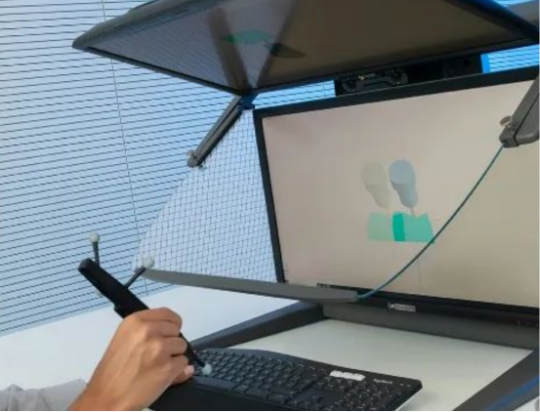
1. Introduction
Accompanied with the rapid development of aerospace, power equipment, and high-end pump machinery, impeller parts have represented the pinnacle of high-difficulty machining parts with the evolution of manufacturing through their complex space geometry and function demands. Their flow channel structures are generally three-dimensional curved surfaces with variable cross-sections and very limited space, where tools can easily interfere and over-cut when machining, and which puts higher demands on path planning and simulation.
Traditional path planning methods are mostly dependent on experiential environments and trial-cut checks through repeated trials, which are time-consuming and costly. The widespread use of five-axis linkage machining and the development of CAM system functions have made simulation-oriented path planning methods become mainstream. This article methodically explores the value essence of CAM systems in impeller machining path planning and simulation, focusing on introducing the strategies of path, simulation methods, and optimization results, and examining the future prospects of AI and VR technologies in developing new path planning methods.
2. Application Value of CAM Systems in Impeller Machining
Five-axis machining of complex impeller geometries imposes extremely high requirements on path planning, interference avoidance, and machining quality. Sophisticated CAM systems have been the indispensable kernel tools in the precision machining process of impellers due to their highly integrated modeling, simulation, and optimization functions.
2.1 Visual Path Planning
Based on the 3D CAD models, CAM systems can achieve visual path planning of multi-axis linkage within the virtual environment. Especially for free-form surface geometries like impellers, the tool paths can be linked in real-time to workpiece geometry and machine tool motion orientations, allowing programmers to naturally discern path dead corners, redundant motions, and areas of potential interference. Such a complete-perspective path generation strategy founded upon geometric and motion constraints significantly improves complex part path programming efficiency and accuracy and minimizes the process preparation cycle.
2.2 Dynamic Simulation and Collision Detection
In the virtual machining environment with CAM integration, relative motion relationships among tools, tool shanks, spindles, worktables, and workpieces can be simulated along the process. Collision detection algorithms are used in the system to identify and warn tool interference, over-cutting, tool skipping, and other issues in real time. Along with the trajectory optimization function and constraint condition regulating function, the dangers can be actively avoided at the early stage of machining, achieving the collaborative optimization of tool axis attitude and path continuity, effectively ensuring the safety of the machining process and the controllability of paths.
2.3 Machining Residue Analysis and Path Correction
Based on the cutting residue maps output by the simulation module, users can accurately calculate the residue distribution on complex curved surfaces, providing data support for the (targeted) optimization of secondary finishing paths. Equipped with residue-driven path reconstruction technology, the system can automatically adjust step pitch parameters, feed rates, and tool postures to achieve accurate compensation for local residue areas. This function not only enhances surface quality but also greatly increases machining efficiency and stability of machine tool operation.
3. Tool Path Strategies and Simulation Optimization Methods
The high-accuracy and high-complexity cutting of an impeller poses multi-dimensional requirements on tool path strategies, which must balance topography flexibility, simulation controllability, and cutting efficiency. Various path generation and simulation optimization software in CAM systems provide visual and verifiable technical support for planning paths in five-axis linkage machining.
3.1 Z-Level Cutting Path
Z-Level paths perform layered machining with a constant Z-layer height, targeting especially deep cavities and inclined wall areas with steep angles in impeller flow channels. The approach guarantees interlayer residue consistency, reduces the potential for step marks during machining, and improves the stability of the roughing operation. With the assistance of machining simulations, one can define reasonable layer height and step pitch parameters to obtain improved path continuity and well-balanced tool forces.
3.2 Scallop Finishing Path
Scallop paths generate continuous tool paths on the complex free-form surface based on the equal surface residue height criterion, which can be used for high-quality finishing of impeller blades. The path can effectively reduce topographic errors in the area of tool trajectory overlapping and improve the uniformity of the surface. During the simulation stage, postural alteration and acceleration response in areas where there are abrupt changes in curvature need to be watched closely to avoid abnormal tool loads or trajectory acceleration caused by local curvature mutations.
3.3 Five-Axis Dynamic Posture Control
For areas that require big-angle posture variation, such as blade roots, hub joining areas, and curved surface junction areas, five-axis linkage can be employed by CAM systems to control the direction of the tool axis in real time and dynamically optimize machining attitudes. By setting inclination ranges and posture smoothing parameters, the system can effectively suppress impact loads caused by sudden switching of the tool axis and vibration of the machine tool, thereby improving the consistency of the machined surface and the tool life.
3.4 Adaptive Stock Path Optimization
Based on the residue maps produced by machining simulation, regional path spacing adjustment strategies can be achieved automatically by the system. In areas of dense stock, the step pitch is appropriately reduced to enhance the removal rate; in lines and areas that are sufficiently machined, the path spacing can be expanded to increase efficiency and tool utilization. This kind of "adaptive step pitch" balances machining accuracy and time cost, and it is one of the important aspects of CAM intelligent path planning.
4. Case Study: Simulation and Optimization of Aviation Titanium Alloy Impeller
On a machining operation of an aviation compressor impeller that is titanium alloy, the PowerMILL system was applied in five-axis path design and whole process simulation. The machining tool was an R1 ball-end cemented carbide mill, and the path combination employed a "Z-Level + Scallop" strategy.
During the initial simulation phase, there was tool shank interference found at the roots of the blades. After optimizing the tool overhang length and posture parameters and re-simulating, the interference issue was successfully avoided. Residue analysis, meanwhile, indicated that a maximum stock of 0.03mm was attained, which met the requirements for subsequent polishing. The machining cycle was shortened by 12% and the tool wear rate was significantly reduced following simulation optimization, proving that path simulation can effectively improve actual machining outcomes.
5. Innovative Promotion of Path Planning by AI and VR Technologies
The "CAMStylus" system developed by the Fraunhofer IPT research institute first introduces artificial intelligence and virtual reality into the field of CAM path design. Based on a VR three-dimensional environment, this system allows users to intuitively sketch paths on workpiece models using a gesture pen, and the system then uses neural networks to automatically identify path features and calculate corresponding tool trajectories and machining parameters.
Experiments indicate that this approach successfully decreases the reliance of path planning on operational experience and significantly enhances the interactivity and efficiency of path definition, illustrating the extensive application potential of AI and human-computer interaction technologies in CAM systems of the future.
7. Conclusion
CAM system-based tool path simulation technology has evolved into a vital tool for the production of��high-complexity impeller components. Through path visualization, collision prewarning, residue analysis, and parameter adaptive optimization, it has greatly improved the controllability and efficiency of the machining process. With the help of new technologies such as AI and VR, future path design will become more intelligent and more convenient to operate, bringing the manufacture of impellers into a new era of digitization and intelligence.
#CNCmachining#CNCmanufacturing#PrecisionMachining#CNCtechnology#MachineShop#CustomMachining#CNCparts#MetalFabrication#CNCengineering
0 notes
Text
🔍 Are you in need of precise and efficient CNC machining services? Your search ends here!
🛠️ As the leading and experienced CNC machining company, we offer custom low-volume CNC machining services for mass production and prototyping.🚗🏥✈️ From automotive, and medical to aerospace applications, our experts create complex parts with tight tolerances for various industries.🌟 Also, our high-quality CNC machining solutions offer exceptional accuracy and quality, ensuring your parts are manufactured to your exact design.
⏳ So, don’t wait! 📞 Contact our experts today at +86 180-2532-9092 for a customized quote.
🌐 Visit our website: https://www.createproto.com/service/cnc-machining/ for more details. 🔗🏢
#cncmachining#precisionmanufacturing#custommachining#industrysolutions#manufacturingexperts#qualityproduction
0 notes
Text
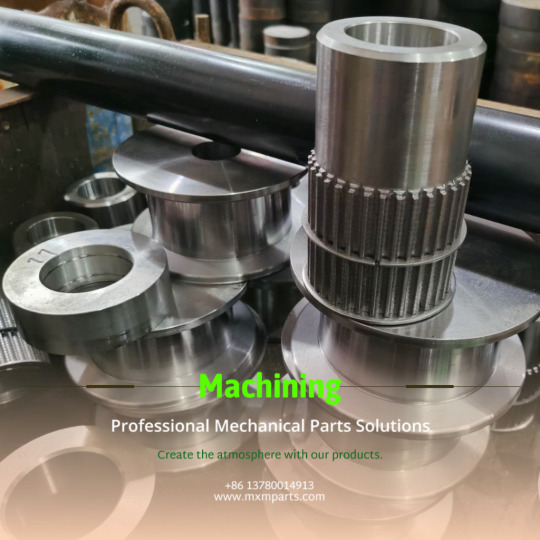
Exceptional Steel Turned Parts Custom Machining Services from Ming Xiao Mfg – Your Go-To China Supplier.
I recently had an outstanding experience with Ming Xiao Manufacturing, a China-based supplier specializing in Steel Turned Parts Custom Machining. If you're on the lookout for top-notch precision and reliability, look no further!
**Why Ming Xiao Mfg Stands Out:**
Ming Xiao Mfg impressed me with their unparalleled precision in custom machining. The attention to detail and quality of their steel turned parts exceeded my expectations. They truly prioritize craftsmanship.
**Exceptional Customer Service:**
From the initial inquiry to the final delivery, Ming Xiao Mfg's customer service was exceptional. They are responsive, transparent, and committed to ensuring customer satisfaction throughout the entire process.
**Competitive Pricing:**
Affordability meets quality with Ming Xiao Mfg. Their competitive pricing caught my attention, and the value for money is unbeatable. You won't have to compromise on quality to stay within your budget.
**On-Time Delivery:**
Timely delivery is crucial in the manufacturing industry, and Ming Xiao Mfg nailed it. My order was delivered promptly without compromising the precision or quality of the steel turned parts.
**#MingXiaoMfg #CustomMachining #SteelTurnedParts #ChinaSupplier #PrecisionMachining #QualityCraftsmanship #CustomerSatisfaction #AffordableQuality #OnTimeDelivery**
I hope this recommendation helps others seeking reliable and precise steel turned parts custom machining services. Feel free to ask me any questions about my experience with Ming Xiao Mfg!
#china supplier#cnc turning#steel turned parts#CNC Turning Parts#mxmparts#china metal parts#custom parts#china turned parts#cnc turned parts#china steel parts#turned parts
0 notes
Photo

How about our Blackstone and Graphene coating Repost from @martinsocold • Keep It clean 😎 : The final out come on the custom machining for @jose_a_flores1 new key ignition and head light switch knobs curtesy of @gregfull #pristinecustompaint #custommachining #keepitsimple #c10 #c10addiction #c10nation #socoldapproved 🥶☕️ (at IA Coatings) https://www.instagram.com/p/CDwgBK9ps6b/?igshid=2ue2flhm1pq
1 note
·
View note
Video
youtube
KD Hardware offers high-precision 3-axis CNC machining services, specializing in complex parts with tight tolerances. Our advanced technology ensures accuracy and efficiency for various industries, delivering quality results on time.
Link: https://kd-cncmachining.com/Services/Precision-three-axis-machining.html
#youtube#3axiscncmachining#3axismachining#custommachining#cncfabrication#customcncmachining#cncgrindingservices#rapidmolding#cncworking#cncprocessing#milling#cncmachining
0 notes
Photo
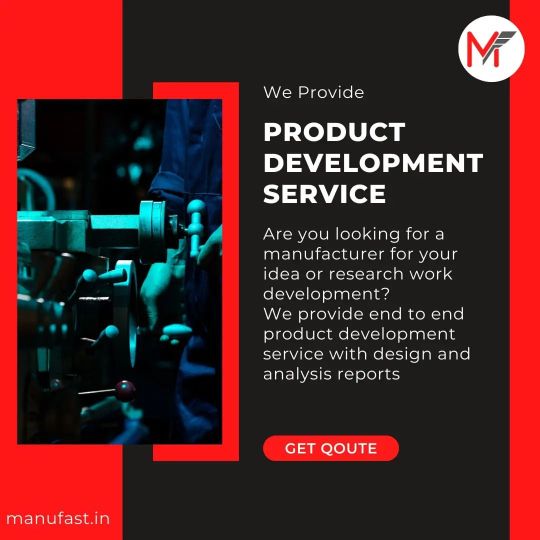
Are you looking for a manufacturer for your idea or research work development? We provide end to end product development service with design and analysis reports For any inquiry regarding this then contact @manufast.in #manufast #productdevelopment #custommachine #product #development #productdesign #mechanicalengineering #manufacturing #innovation #innovativeideas #machine #ideas #ideatoproduct #production #jobproduction #mechanicalengineer (at manufast.in) https://www.instagram.com/p/ClNkQEnjnFW/?igshid=NGJjMDIxMWI=
#manufast#productdevelopment#custommachine#product#development#productdesign#mechanicalengineering#manufacturing#innovation#innovativeideas#machine#ideas#ideatoproduct#production#jobproduction#mechanicalengineer
2 notes
·
View notes
Text

Tool Selection for High-Speed Machining of Impellers
Abstract
Impellers are core components in energy conversion systems such as aerospace engines and turbomachinery. Their manufacturing quality directly affects overall machine efficiency and operational stability. With the widespread adoption of High-Speed Machining (HSM) in impeller production, selecting suitable cutting tools has become a critical factor in achieving high efficiency, excellent surface quality, and tight dimensional tolerances. This article analyzes the challenges of HSM for impellers, evaluates the characteristics of common workpiece materials, discusses current tool materials, geometries, and coatings, and proposes selection strategies tailored to different machining stages. Practical application cases are included to validate performance, offering technical guidance for improving the stability and cost-effectiveness of impeller manufacturing.
1. Introduction
Impellers used in aerospace engines, gas turbines, and energy compressors often feature thin walls, complex 3D curves, and are made from difficult-to-machine materials. High-Speed Machining (HSM) is widely employed to improve processing efficiency and surface quality. However, under high-speed and high-heat conditions, cutting tools are prone to rapid wear, edge chipping, and thermal damage.
Therefore, selecting tools with optimal heat resistance, wear resistance, edge strength, and anti-adhesion characteristics is essential for reliable HSM of impellers.
2. Process Characteristics of High-Speed Impeller Machining
Key challenges of HSM for impellers include:
High thermal load: Speeds often exceed 100 m/min, generating intense localized heat.
Difficult-to-machine materials: Titanium alloys, nickel-based superalloys, and stainless steels exhibit low thermal conductivity and strong work hardening.
Complex geometry: Blades and flow channels require multi-axis simultaneous machining with stable toolpaths.
Tight tolerances: High accuracy is required for surface roughness, concentricity, and aerodynamic profiles.
These conditions demand tools that balance hot hardness, edge toughness, thermal stability, and geometry precision.
3. Tool Material Selection
3.1 Ultra-Fine Grain Carbide (WC-Co)
Carbide tools are the most commonly used for impeller machining. Submicron or nanograin carbide (0.3–0.7 μm) offers high hardness with improved fracture toughness, making them suitable for most HSM tasks.
3.2 Coated Carbide Tools
Applying PVD/CVD coatings like TiAlN, AlTiN, and TiSiN improves surface hardness, thermal resistance, and anti-oxidation capabilities. These tools are ideal for high-strength steels, nickel alloys, and titanium components.
3.3 Ceramic and CBN Tools
Effective in dry cutting or interrupted cuts of hardened materials. While offering extreme heat resistance, they are brittle and best used in finishing or localized heavy-duty applications.
3.4 PCD Tools
Ideal for high-speed machining of aluminum alloy or composite impellers (e.g., CFRP). Not suitable for ferrous materials due to chemical reactivity.
4. Tool Geometry Considerations
Rake and relief angles: Large rake angles reduce cutting forces; relief angles of 8–12° offer good edge support.
Edge honing: Honed radius of 10–20 μm enhances edge strength and reduces chipping.
Helix angle and flute design: High helix angles promote chip evacuation and smooth cutting in soft metals.
Toolhead types: Ball nose, corner radius, and tapered tools are preferred for 5-axis impeller profile transitions.
5. Coating Selection and Applications
Coating TypeKey PropertiesApplicationTiAlNHigh hardness, oxidation resistanceGeneral titanium and steel alloysTiSiNExtreme wear and heat resistanceNickel alloys, high-strength steelAlCrNHigh toughness, thermal conductivitySemi-finishing and roughingDLCLow friction, anti-adhesionAluminum alloy HSMCVD coatingsThick, long-lastingHeavy roughing, high chip load areas
6. Practical Applications and Tooling Suggestions
MaterialMachining StageTool MaterialCoatingNoteTC4 Titanium AlloyFinishingNano-grain carbideTiAlN/TiSiNUse high-pressure coolant to reduce heatInconel 718Semi-finishingCoated carbideTiSiNUse arc tools and stable feed pathsAluminum AlloyHigh-speed roughingPCDDLCDry machining, ensure chip removal efficiencyMartensitic SteelRoughingCoated carbideAlCrNAvoid built-up edge formationCFRP CompositeSurface finishingPCDUncoatedUltra-sharp edge required
7. Conclusion
Cutting tool systems are vital to the success of high-speed impeller machining. A proper combination of tool material, geometry, and coating—based on workpiece material and machining conditions—ensures process stability, efficiency, and part quality. With emerging technologies like tool wear monitoring and adaptive control, the future of impeller tooling will be more intelligent and data-driven, further supporting advanced manufacturing needs in aerospace and energy industries.
#cncmachining#CNCmachining#CNCmanufacturing#PrecisionMachining#CNCtechnology#MachineShop#CustomMachining#CNCparts#MetalFabrication#CNCengineering
0 notes
Photo

#bmw #r100rs cafe race by @caferacernewstyle Mira la nota completa en nuestra web!!! #caferacer #bmwr100 #bmwcaferacer #bratstyle #retro #custommade #custommachines https://ift.tt/2OLDaMS
98 notes
·
View notes